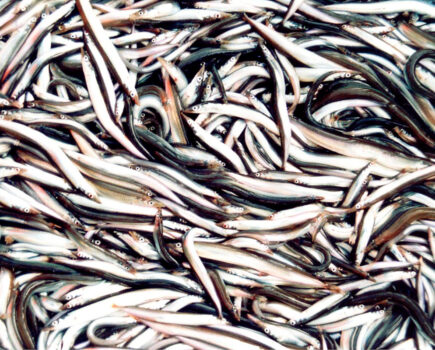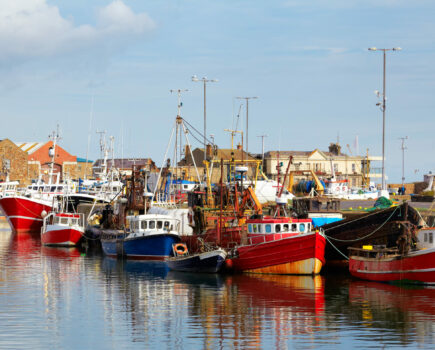North Norfolk’s wooden boat heritage lives on, reports John Worrall
You don’t sense the passion immediately. At first glance, the Hewitt brothers’ boat yard, accommodated in and around a collection of large sheds just above the marshes at Stiffkey, looks the usual stuff, with boats blocked up on the grass awaiting work, or collection, or a buyer.
But get into a shed and find a wooden boat being worked on, surrounded by boat-making and restoring paraphernalia pushed just far enough back for any work to get done at all, and you feel the passion alright, and the craftsmanship. Wooden boats in particular are what David and George Hewitt are about. And from that has now come a mission.
Not so long ago, North Norfolk’s fishing boats – the beach-launched crabbers, the broader-beamed whelkers – were mostly made of wood and unchanged for generations. But then change came quickly.
In the 1990s, the two-handed, double-ended crabbers began to be replaced by GRP single-handers – more efficient per man, but also necessary with few youngsters coming to fishing (Fishing News, 10 September, 2015) while the whelks had been wiped out by Tributyltin – TBT – used in anti-fouling paint.

The crabber Star sitting on the clifftop at Overstrand, also needs work. Hope the money turns up soon.
TBT was eventually banned and the whelks are back, but not the wooden whelkers, of which only a non-working handful in various states of repair now survive. Similarly, a few wooden crabbers remain, just one of which still works, single-handedly, from Cromer beach. None of either type has been built for years; David Hewitt built the last working wooden crab boat, the Valerie Teresa, in 1989.
But in 2011, David and George Hewitt joined two leisure crab boat owners, psychologist Wendy Pritchard and Judge Graeme Peart, to form a charitable trust, Rescue Wooden Boats. The trust aims to restore examples of working wooden boats, and to keep some on the water for public enjoyment – and perhaps leasing to trustworthy users – filming the restorations so that future generations can see the skills used to make them, and the men who used them.
The trust’s initial focus was a wooden ex-RNLI lifeboat, the Lucy Lavers, because the Hewitts had previous in such things, having accumulated half a dozen between them – and not many people can say that – which are now variously in the sheds or on the water.
And they had, anyway, a tenuous emotional connection with the Lucy Lavers.
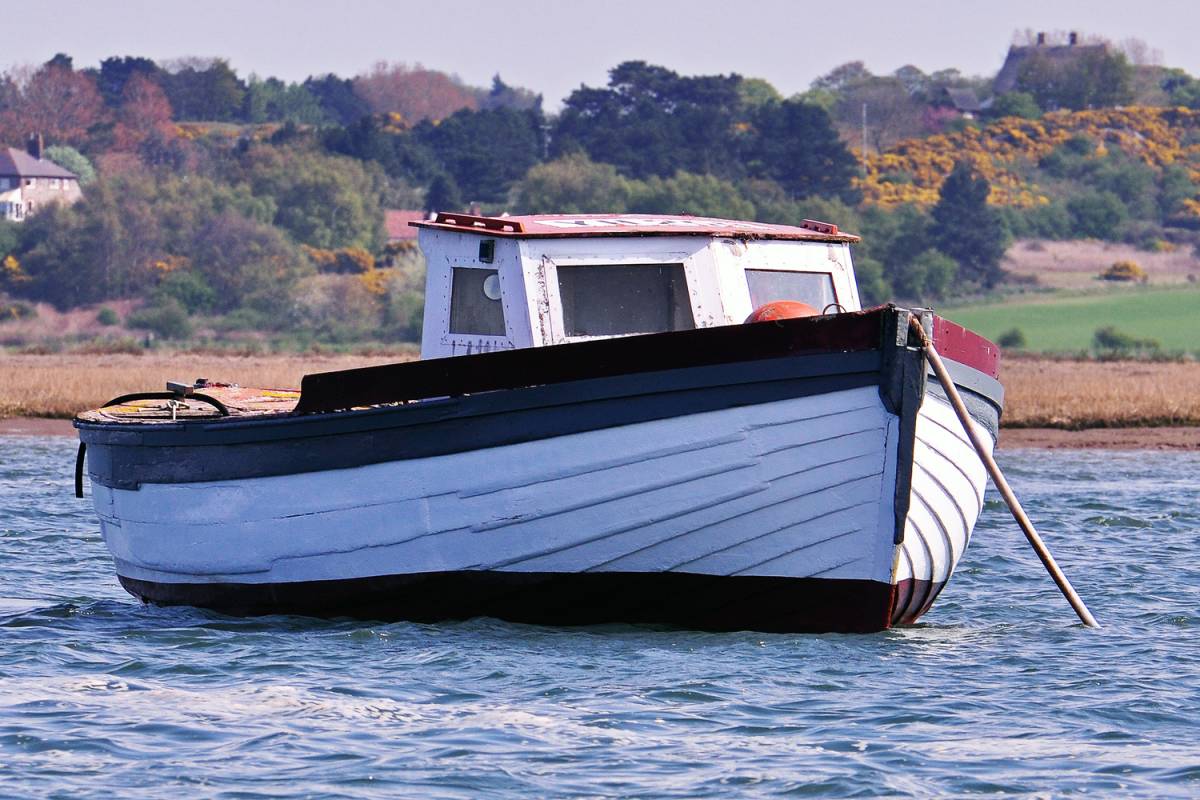
The whelker Bessie…
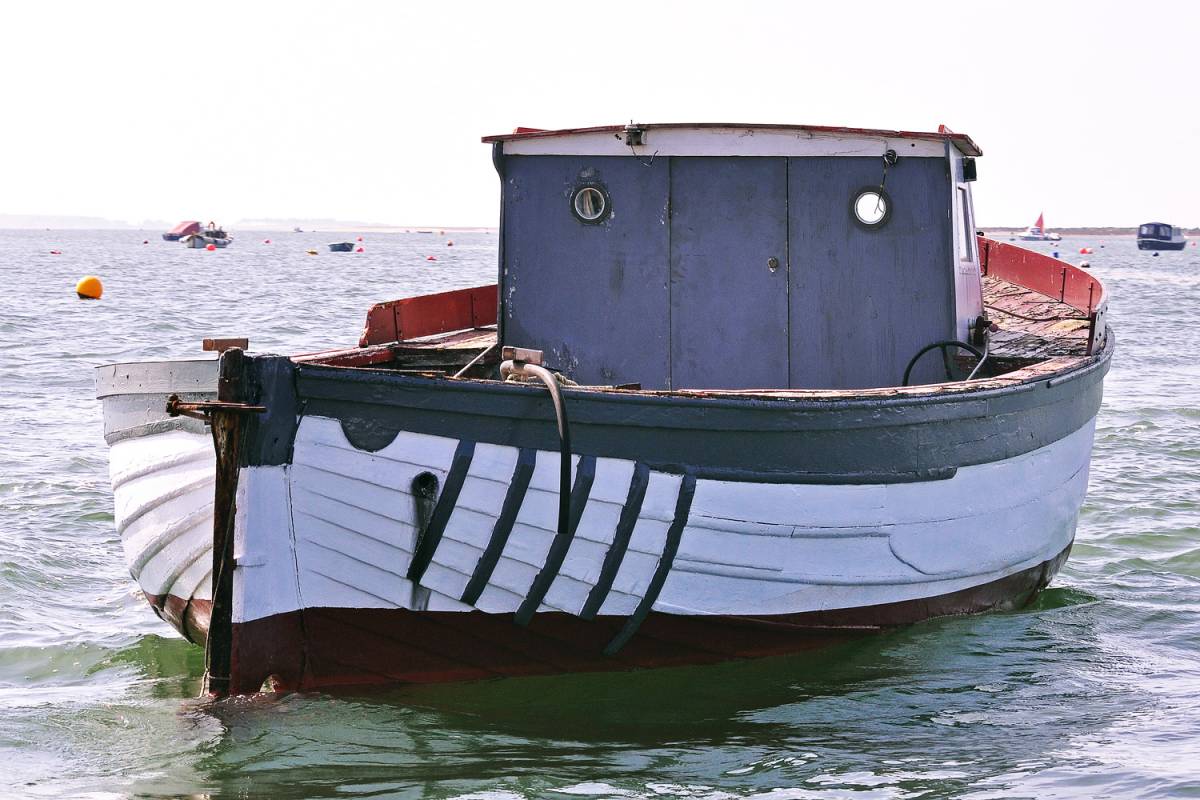
… is in the most original condition of the half-a-dozen whelkers remaining.
This single-engined Liverpool class lifeboat was built on the Isle of Wight in 1940, and was immediately sent with other ‘little ships’ to the Dunkirk evacuation. She then served at Aldeburgh, Suffolk until 1959, before becoming a reserve boat at various stations, including Sheringham and Wells in Norfolk, which was where the brothers used to see her as boys. Lucy Lavers later worked in the Channel Islands as a dive boat, eventually ending up in storage with the Dunkirk Little Ships Restoration Trust.
A few years later, Lucy Lavers was donated to Rescue Wooden Boats for restoration and with much fund-raising, matched by a Heritage Lottery grant, and extensive work by David, George, Ben Riches and apprentice, Tom Gathercole, she made the 75th anniversary trip to Dunkirk in 2015. Now she’ll be at Wells, available from Easter to autumn, for events and short trips.
Meanwhile, the trust is getting on with the wider mission, and a number of boats are now in hand.
One is the whelker Bessie, 26ft long by 10ft beam, built in the mid-1930s by Johnny Johnson of Sheringham for the Cox fishing family. Coincidentally, she too went to Dunkirk, with Wells lifeboat coxswain Ted Neilson in command, and Loady Cox in the crew, in an attempt to collect a French diplomat but the rendezvous didn’t happen. But as LN 16, she whelked from Wells and Sheringham, and was acquired from Trevor Farman who had latterly used her as a charter angling boat from Gorleston. She now sits on a drying mooring at Morston, awaiting full restoration.
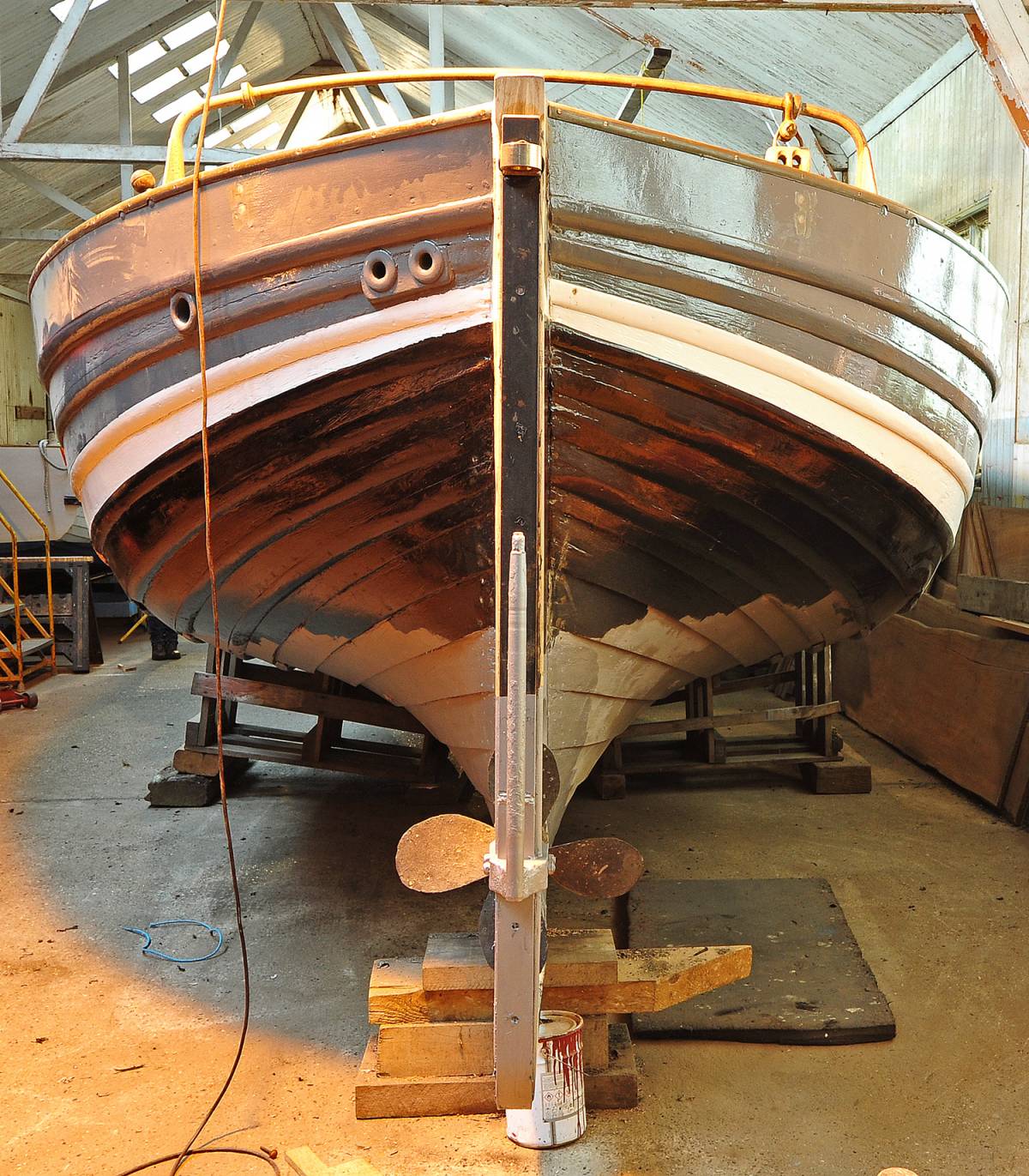
The whelker Harvester…
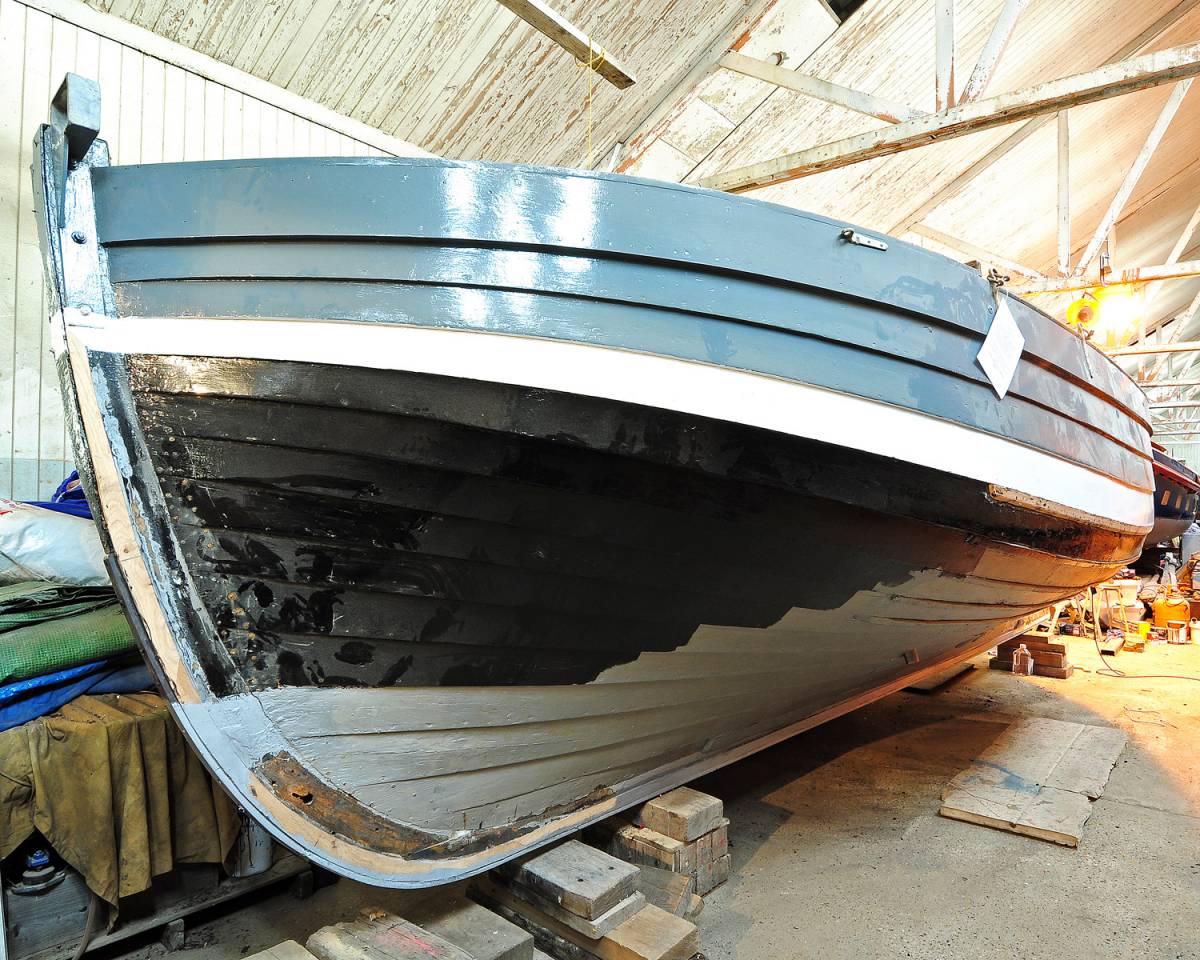
… is being worked on.
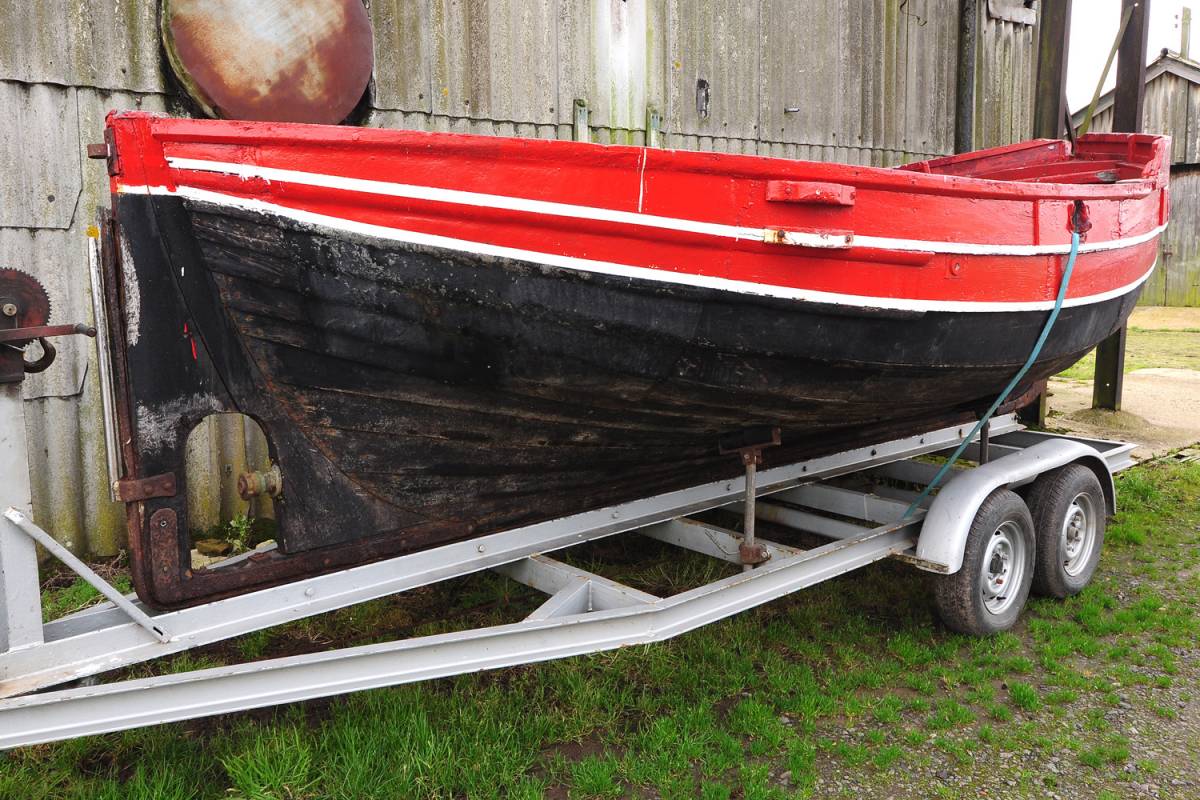
The crabber Black Beauty needs a lot of work, “but she’s such a beautiful shape,” says David Hewitt.
“Only six whelkers remain, including a couple built at King’s Lynn,” says David. “But the Sheringham-built boats are the be-all and end-all of whelkers, and Johnson was prolific. Yet he worked mostly on his own, and with a gammy leg. Just two of his boats have survived and only Bessie is in original condition.”
Another whelker, Harvester, has been donated by former trustee Graeme Peart, who had her as a leisure boat on which David Hewitt had already done some work. Built in Sheringham in 1951 by the Emery family, the town’s other noted boatbuilders, Harvester was the first boat produced on that coast with a hydraulic hauler, an advance on the, then usual, bollard lashed to an Austin 7 engine.
“She’s also 26 feet long, with a 10’4″ beam, and was built for Sid ‘Custard’ Cooper at Wells.”
And then there are the crabbers.
Black Beauty, another Emery boat, built in 1950 for Cromer fisherman Dick Davies, was donated by Wells fisherman, Andy Frary, in the trust’s early days and now awaits restoration funds.
“You’re talking a thousand hours to do her,” says David. “She needs planks and timbers, and keel. But she’s such a beautiful shape.”
Then there is the 22ft Star, built for Overstrand fisherman, Norman Davis by Billy May, at Potter Heigham in 1978, one of the last May boats. “Norman worked her right up until his death three or four years ago, after which she was bought by Ernie Dewhurst from Lowestoft, who donated her. Star sits on the clifftop at Overstrand, also awaiting money.”
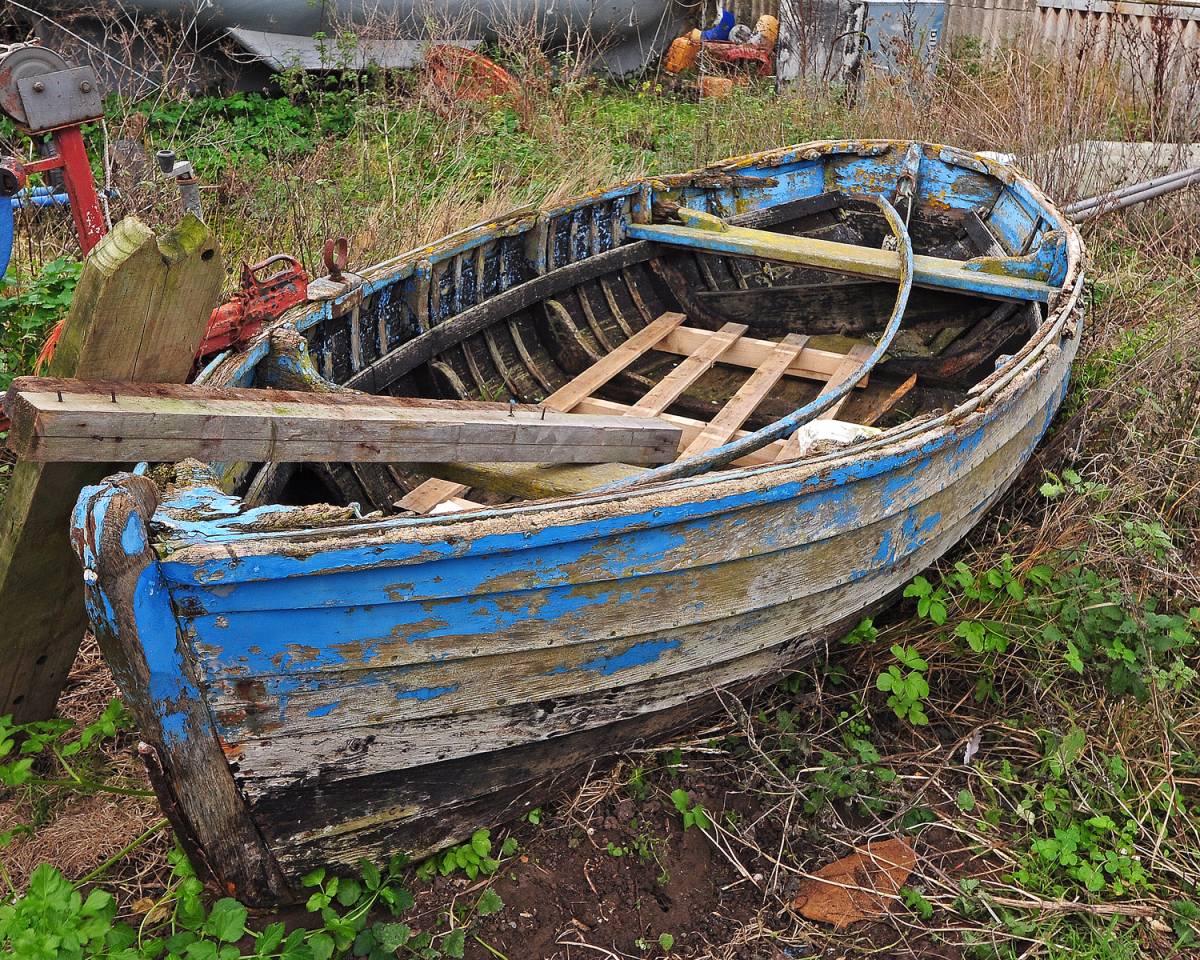
This mussel flat probably won’t make it back into the water.

Three of the original prime movers, left to right: George Hewitt, Wendy Pritchard and David Hewitt.
The third crab boat, Pegasus, built in the early 1970s, again by Billy May, is more travelled.
“She worked from West Runton, before being taken to Scotland around the turn of the millennium, where she was at Fairlie, Ayrshire, supplying the Catch at Fins restaurant. The owner, Bernard Thain, eventually decided to give her to us. He brought her all the way down again and she’s now in storage. But she needs a lot less doing to her than the others – 500-600 hours would get her up and running.”
The one that might not make it back into the water is a mussel flat, a small open boat used for working mussel lays in Brancaster harbour. Donated by Brancaster fisherman Cyril Southerland, she is just about beyond working again and will be preserved simply as an example of the type.
For all these boats, it’s about money, and that comes down to fund-raising, website donations and the Maritime Heritage Centre next to the yard, which operates at weekends from March to late October. It’s a slow process. But at least these survivors have been picked before they were too far gone in the mud somewhere.
Further information is available at rescuewoodenboats.com
Read more from Fishing News here.





